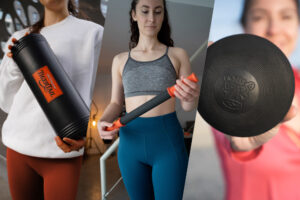
Free Shipping on $50+

As endurance athletes, we are innately stubborn people. We’ll be the first to argue with anyone who tells us we can’t do something, find exhilaration in pushing our bodies to find new limits and seek thrill when we push the line of that limit again and again. So, when we inevitably hit the wall of injury, it can feel like just another hurdle to clear before we’re on our way to our next hill workout, yoga class, or all-day hike.
I, for one, couldn’t be more guilty of the above. This all came crashing down for me recently when I got side-lined training for a road race. I’d been feeling knee pain for months but kept adjusting sneakers, the inserts in my sneakers, my socks…more toys for less pain, right? Wrong. Well, at the very least those toys didn’t appear to be helping.
After about 12 weeks, I’d let things get so bad my knee felt as if it was getting hammered with an ice pick from every step. I was terrified I’d somehow compressed my cartilage or gotten a hairline fracture because it didn’t seem like anything else could hurt that bad. By the time I dragged myself to the orthopedic, I couldn’t even walk. I had the gait of an 80-year-old lady, with the scowl of a 4-year-old about to find out dessert is canceled indefinitely.
Luckily my orthopedist, and then my physical therapist, were the best kinds of doctors: realists. They don’t fill you with the sometimes over-hyped medical jargon that makes you more than certain you have 17 rare forms of elbow cancer. They told me like it was: Your muscle is a tight little ball of pain and it’s going to take diligence and torture to roll it back out.
It sucks. That’s the long, short, and medium version.
But I learned my lesson. Preventative attention is the only way to avoid injury. I should have realized it. It’s why we stretch, why we cross-train, why we take rest days. I was just too stubborn to realize it, and at the time I didn’t know to know that muscles need to be rolled out after they work hard.
My solution was simple:
It was a process. Collective consensus and personal experience have told me that no one particularly likes rolling their muscles over a roller, but the payoff is tremendous. Today my Tiger Tail is my magic wand. I do it every single time before I leave the gym, and as many times during the week as I can fit into my routine. I extend every spin workout with a post-class rolling session. I have a repeating reminder in my to-do list, and a note in the bottom of my watch bag. Forming habits is difficult, but breaking them is even harder. Making muscle rolling a habit has been the most crucial preventative attention habit for my running world. I’m approaching 3-years (major) injury-free, and I certainly don’t have my desk job to thank. Rolling changed my life. Do it.
Author at thehappyrunnerdiaries.com
Instagram: @thehappyrunnerdiaries